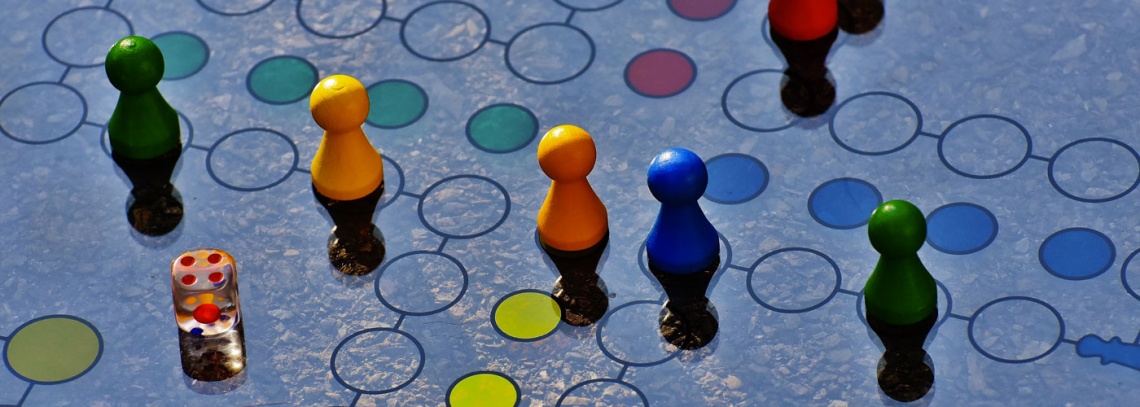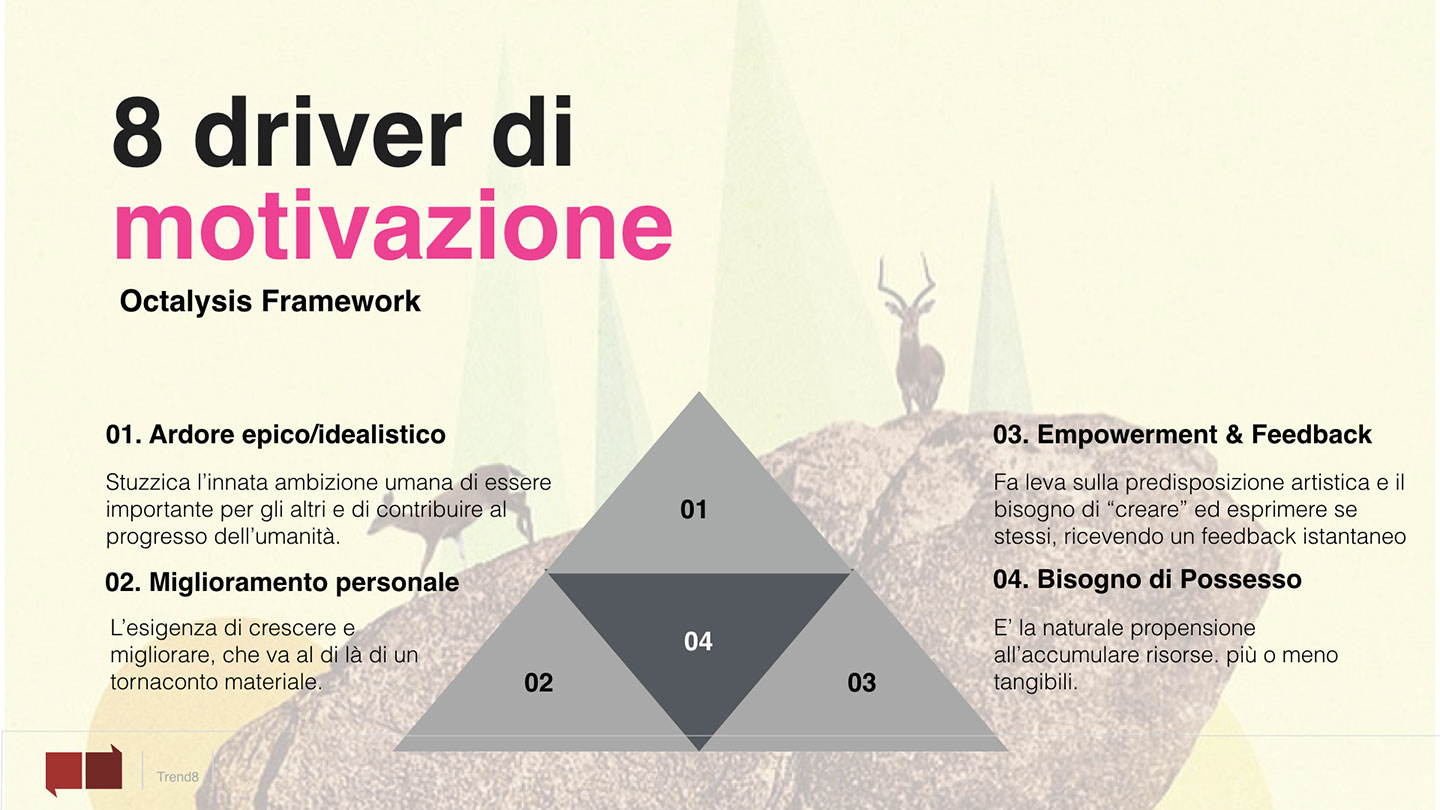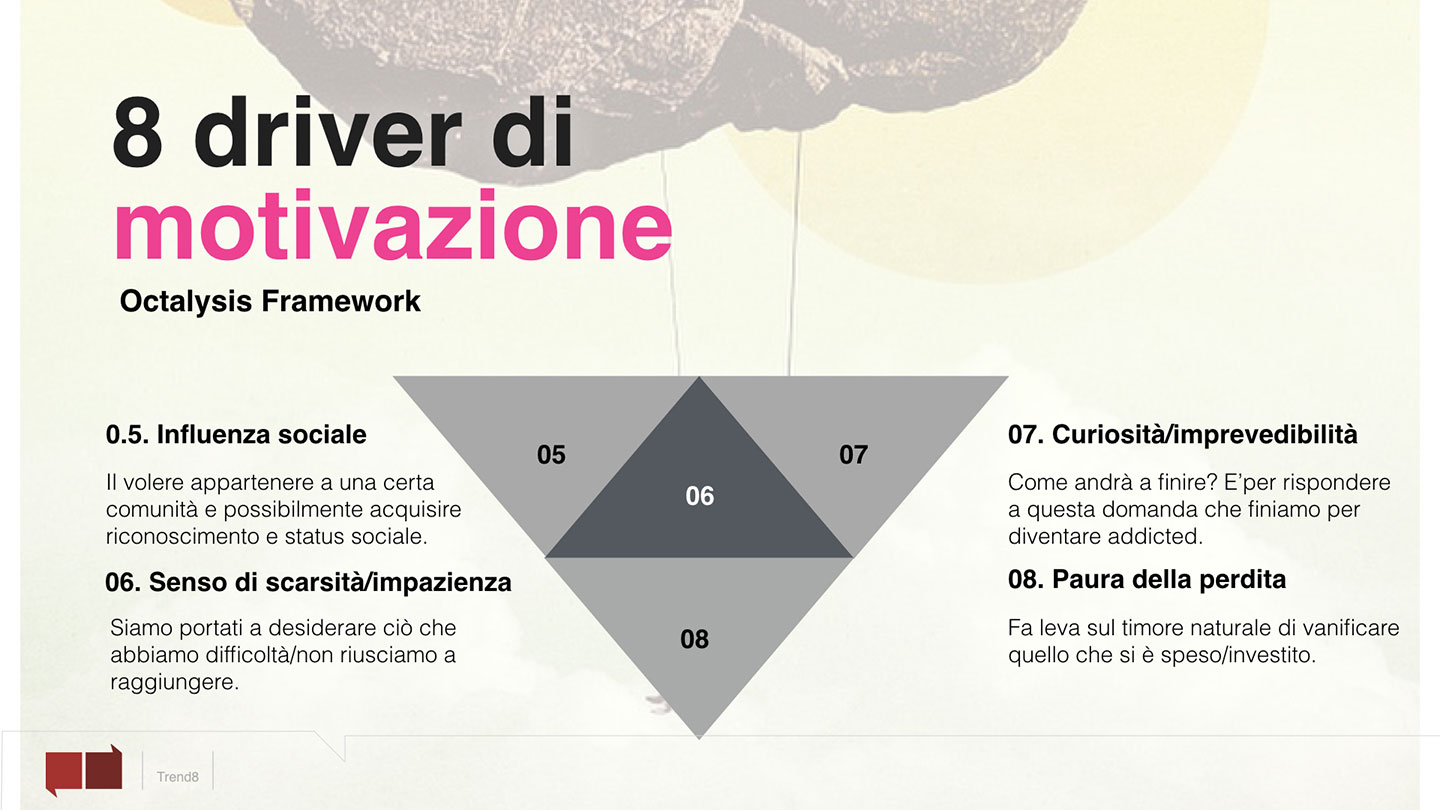You’ve probably read the word “gamification” on marketing blogs and branding websites, but you could be forgiven for not really grasping the real meaning of the concept among all the marketing jargon. The reason why it has become so popular lies in its link to behavioural design and in its potential to enable experiences which drive users’ decisions.
Human Motivation to action and game mechanisms
According to Yu-kai Chou, the acknowledged thought leader in gamification and a pioneer of behavioural design: “Gamification is the craft of deriving all the fun and engaging elements found in games and applying them to real-world or productive activities”.
But why do we enjoy games so much in the first place?
Essentially because they leverage a number of innate Core Drivers which motivate us towards certain actions or decisions.
Gamification is the craft of deriving all the fun and engaging elements found in games and applying them to real-world or productive activities
All game techniques are conceived to motivate us according to one or more specific core drivers. Some of them do this in an inspiring and empowering way, while others tend to manipulate or compel us into doing something. (See the Octalysis Framework below). What is interesting to note is that game techniques and logic can be applied to potentially all sorts of human activities.
Conceived and developed by Yu-kai Chou, the Octalyis Framework brings together the eight most important drivers to action, which motivate us to do all sorts of activities: from playing a game to browsing the web, from trading on the stock market, to hanging out on social networks.
For example, they can be found behind a marketing or a communication campaign: Samsung’s “prankvertising” initiative All eyes on S4 challenged passers-by in Zurich station to win an S4 mobile phone, staging a funny set-up where people were under the influence of at least three core drivers: Empowerment and Accomplishment (Driver 3), as they had to overcome a challenge and receive an instant feedback, Social Influence & Relatedness (Driver 5) embodied by the cheering audience and Unpredictability & Curiosity (Driver7), prompted by the outrageous series of distractions addressed to the players.
Game techniques can also be found behind interfaces we interact with every day. Facebook’s logic provides a tantalising glimpse of how different gaming techniques can be embedded in a digital product, in order to keep users on the page, eliciting their affection (and thus their continuous action).
The potential of gamification in marketing strategies
With this power to motivate users’ behaviour, Gamification has the potential to build brand loyalty and provide the right incentives for customers to visit a company’s product page, for example, make a purchase, or even become a brand ambassador for that product by spreading awareness of it. Marketers can really get creative with this approach, providing their target with unforgettable experiences, which will eventually yield tangible benefits.
“Good Design is good business”, IBM’s chairman Thomas J. Watson used to say. We can say the same thing today about good Gamification.









